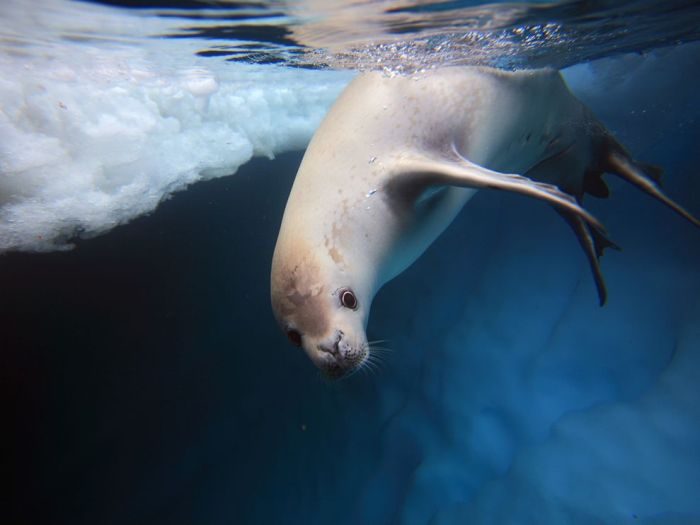|
|
Crabeater Seal
|
The crabeater seal shares a common recent ancestor with the other Antarctic seals, which are together known as the lobodontine seals. These include the Ross seal (Ommatophoca rossii), leopard seal (H. leptonyx) and Weddell seal (Leptonychotes weddelli). These species, collectively belonging to the Lobodontini tribe of seals, share teeth adaptations including lobes and cusps useful for straining smaller prey items out of the water column. The ancestral Lobodontini likely diverged from their sister clade, the Mirounga (elephant seals) in the late Miocene to early Pliocene, when they migrated southward and diversified rapidly in relative isolation around Antarctica.
Distribution and population
Crabeater seals have a continuous circumpolar distribution surrounding Antarctica, with only occasional sightings or strandings in the extreme southern coasts of South America, Africa, Australia and New Zealand. They spend the entire year on the pack ice zone as it advances and retreats seasonally, primarily staying within the continental shelf area in waters less than 600 m deep. They colonized Antarctica during the late Miocene or early Pliocene (15-25 million years ago), at a time when the region was much warmer than today. The population is connected and fairly well mixed (panmictic), and genetic evidence does not suggest any subspecies separations.
|
|









